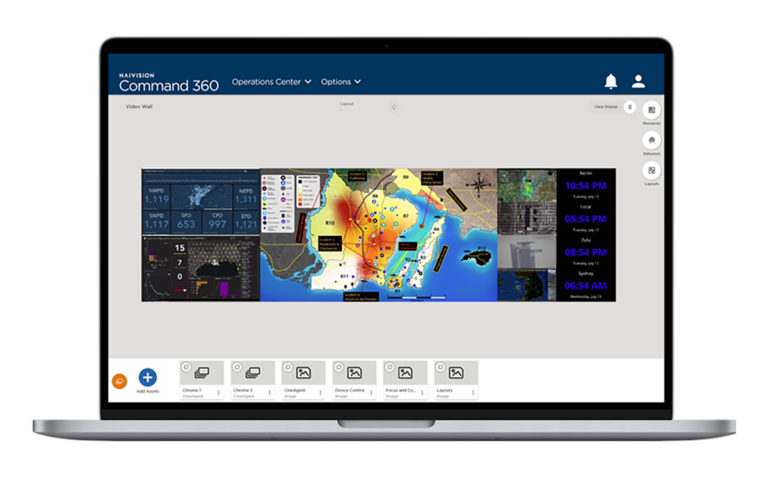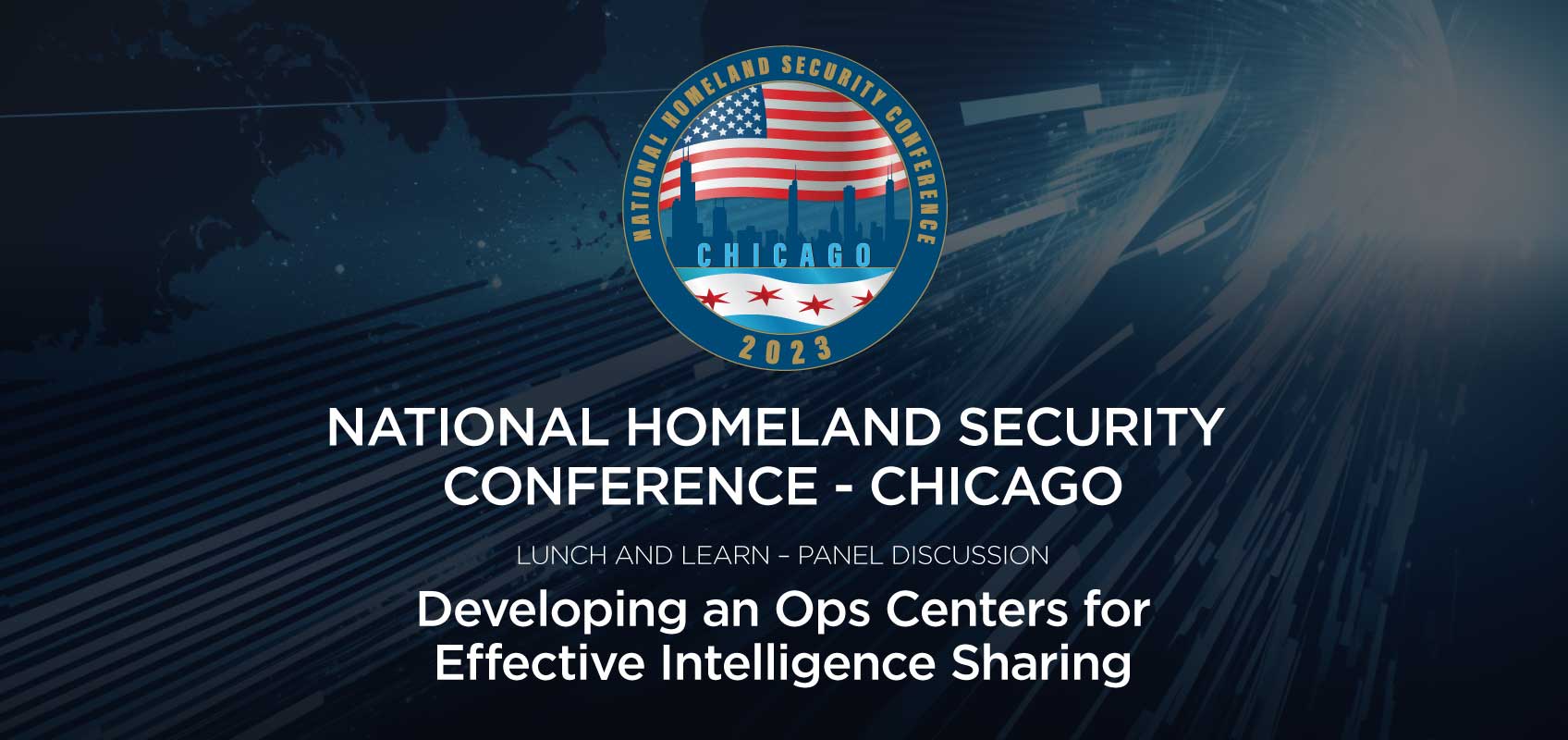At this year’s National Homeland Security Conference, Haivision’s Senior Vice President of Sales, Colin Coyle, moderated a panel of distinguished industry leaders. The panel’s central theme revolved around the development of operation centers optimized for effective intelligence sharing, specifically in the context of real-time crime centers.
In this blog post, we’ll delve into the insights shared by these experts: Kristen Ziman, Former Chief of the Aurora IL Police Department (Ret.); Jay Draisin, Director of Field Support and Training at Fusus; Sean Arthur, Public Safety Specialist at Constant Technologies; and Darin Hull, Captain of the Cobb County Police Department. Watch the full webinar recording here.
Real-World Experience in Real-Time Crime Centers
Real-time crime centers (RTCCs) serve as an anchor in the realm of modern-day law enforcement and public safety, offering capabilities that amplify police departments’ ability to respond to and mitigate threats to public safety effectively. However, as with any emerging technology, there are many best practices that help organizations make the most of these centers. This panel addresses important lessons learned from the panelists’ own experiences in implementing a real-time crime center.
Best Practices in Building Real-Time Crime Centers
RTCCs play a pivotal role in modern law enforcement and public safety. However, the journey to establishing these centers can come with many challenges. Below are a few key lessons learned from industry leaders and shared during the panel discussion.
Educate Stakeholders
One of the fundamental lessons is the importance of educating stakeholders. It’s crucial to involve field personnel and earn their support early. If too much focus is placed on the technology without getting buy-in from the field, it can be a stumbling block to the progression of the implementation of crime center technology. As Jay Draisin, Director of Field Support and Training at Fusus suggests, having respected officers from the field involved in the operation center can lead to better buy-in and cooperation. The input and buy-in of experienced officers can significantly contribute to the success of a real-time crime center.
The role of RTCC personnel is also worth attention throughout the project. While technology is a core component of these centers, it’s essential to recognize that they are often managed by individuals with field experience, not just tech experts. The goal is to empower officers and field experts to make swift and informed decisions.
Adapt the Center to Specific Needs:
“Your real-time crime center — or whatever you call it — is exactly what you want it to be. There is no one cookie-cutter approach to it.” – Kristen Ziman, Former Chief of the Aurora IL Police Department (Ret.)
The name and purpose of real-time operation centers can vary widely. Tailoring these centers to meet the unique needs and objectives of each agency is paramount. A flexible approach rooted in a crawl-walk-run strategy and adaptation to technological advancements is more effective than rigid planning. As part of this strategy, technology integration and the automation of processes should be considered to avoid missteps, as noted by Sean Arthur, Public Safety Specialist at Constant Technologies, it’s essential to focus on software and policies, not just the hardware, when setting up a real-time crime center.
Technology integration and process automation are vital components of a successful center. While hardware is essential, the focus should extend to software and policies. This comprehensive approach ensures the center’s efficiency and effectiveness.
Fostering Collaboration
Collaboration with Field Units
Collaboration with field units is at the heart of RTCCs. Real-time crime centers have an immense power to support field officers by providing surveillance, enhancing staffing, and improving officer safety, but it’s critical that these benefits are demonstrated to those in the field. Cameras can even serve as invaluable “first responders,” providing essential information during critical incidents.
Building Community Relationships
Engaging with the community is pivotal. Transparency, education, and fostering trust through various means, including media, citizens’ police academies, and partnerships, are essential steps. Highlighting success stories and communicating the purpose of RTCCs can bolster community support.
Not only can building community relationships mean a positive public perception of this emerging trend in law enforcement, but it can lead to community support in crime prevention and criminal apprehensions. “Registering community members’ cameras and using them for virtual canvassing can enhance investigations,” Draisin shares as an example of the value building a foundation of community support can have on a police department’s ability to engage the community in becoming part of the solution.
In the same vein, handling public perception is another layer to the establishment of a real-time crime center. This further emphasizes the importance of establishing community trust through transparency. As Kristen Ziman, Former Chief of the Aurora IL Police Department (Ret.) shares, public perception of real-time crime centers can change once they understand the benefits and how they operate. As part of this, Ziman suggests that sharing success stories and consistently communicating the purpose of real-time crime centers is crucial.
“The future of policing is a cooperative effort that relies on resource sharing and a laser focus on public safety in a jurisdictional area.” – Darin Hull, Captain of the Cobb County Police Department



























